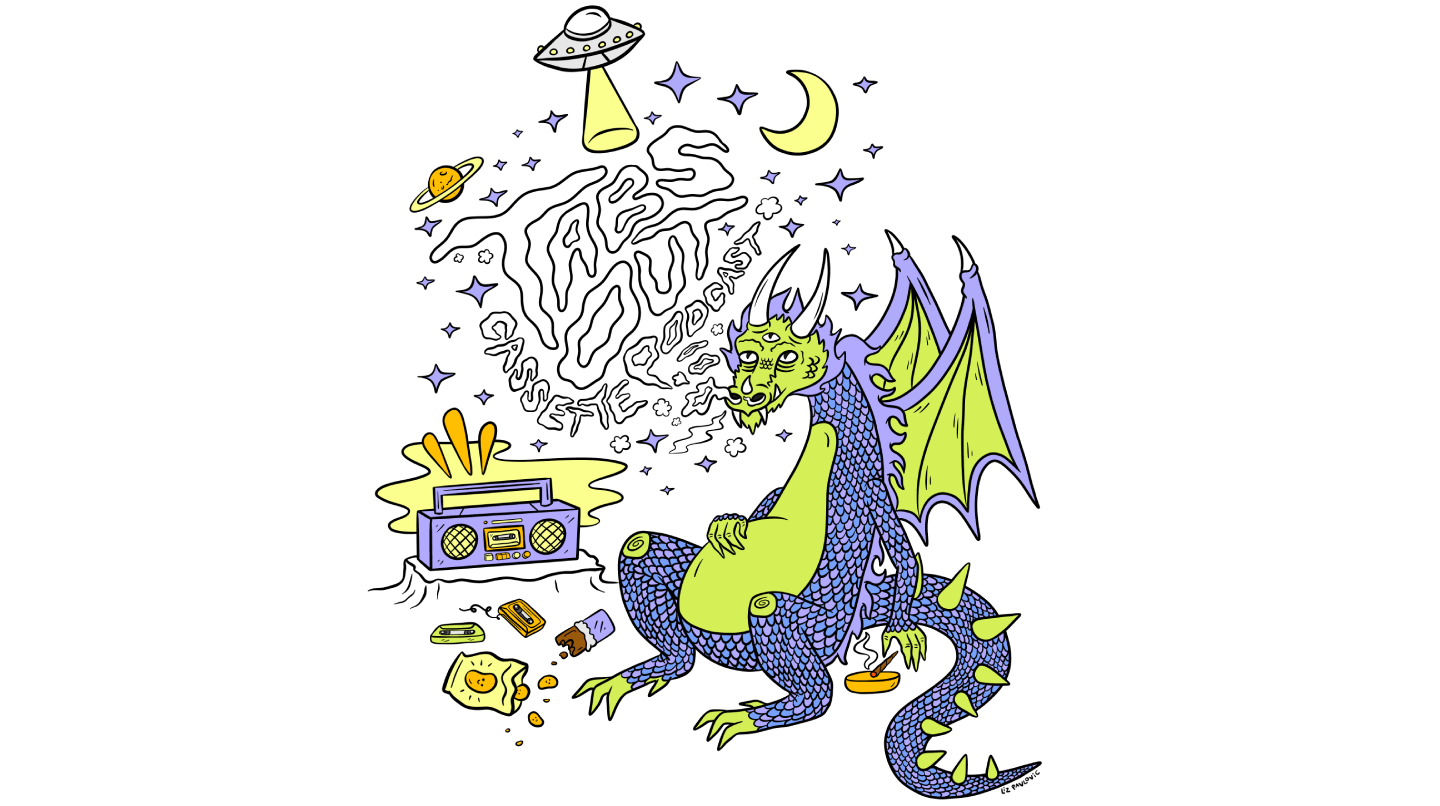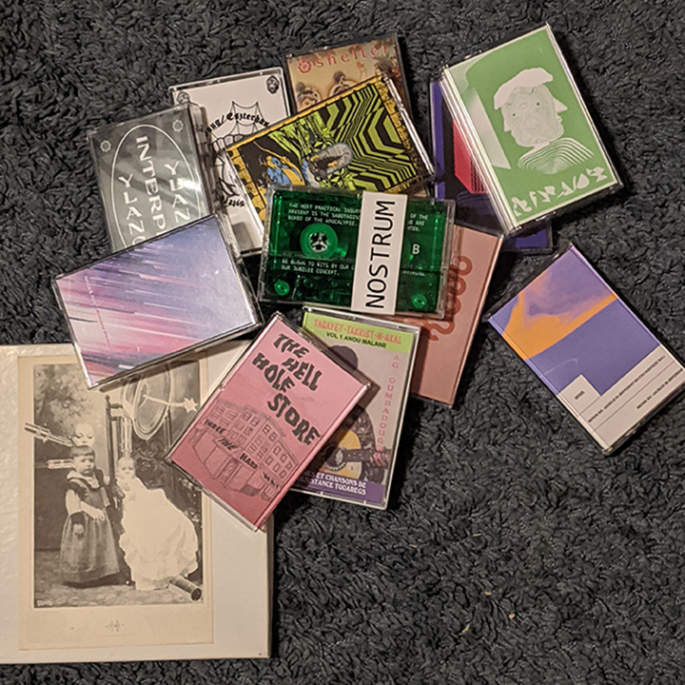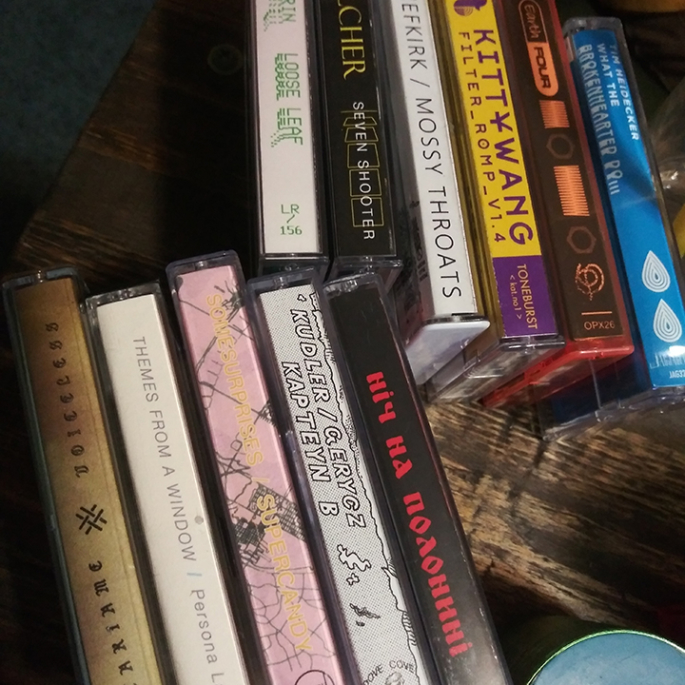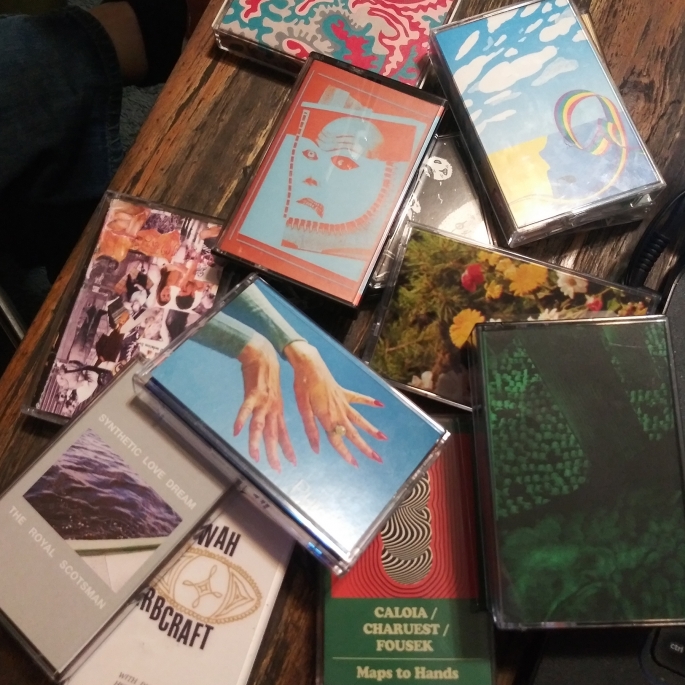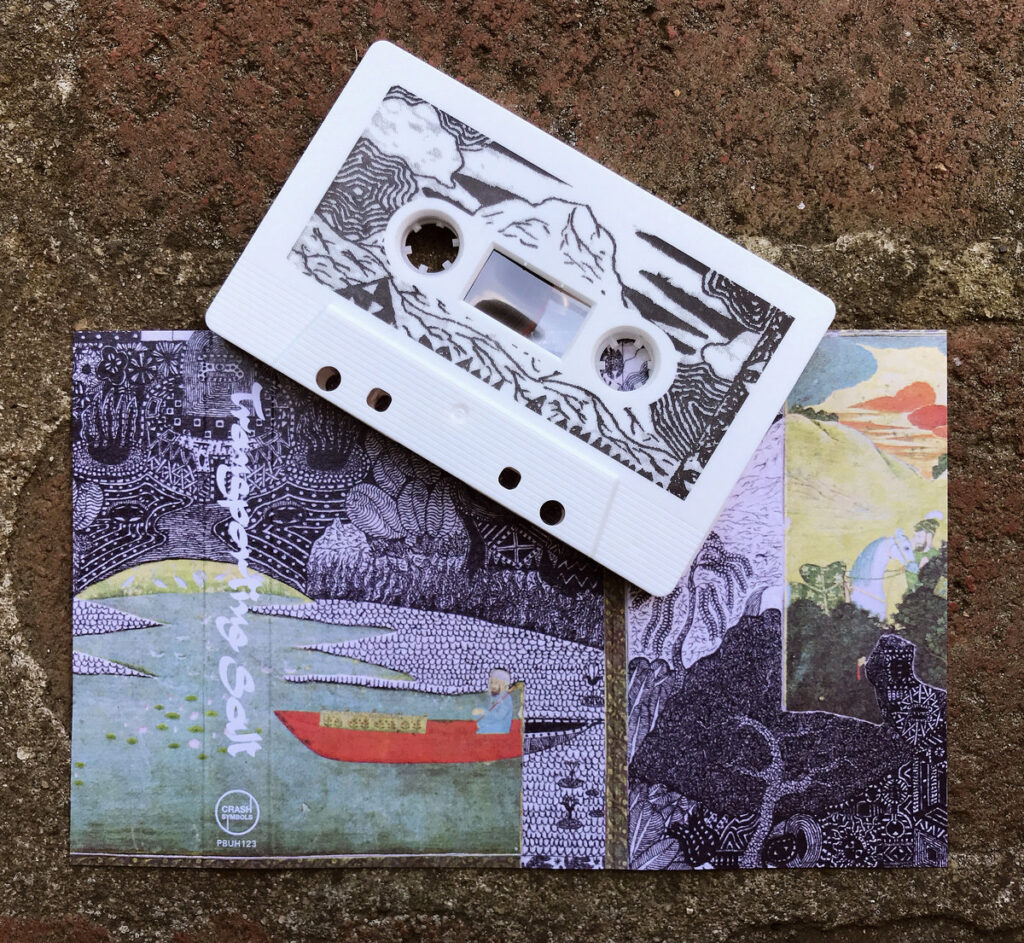2.4.21 by Matty McPherson
I may be late to the party, although I’d still like to declare that more tapes should be dabbling in areas of scientific study. Yes, we have perfected the 60s golden age aesthetics (via Jamie Zuerveza’s Astral Spirits tape art) and modular synthesizers run amok on almost any bandcamp baddie’s page. What I’m talking about are tapes that build off of 20th century scientific finds in manners that are as paranormal as they are sleek. Diana Duta & Julia E. Dyck’s Wave Debris embellishes this area of study across its two sides.
Both sides are dedicated to a live (25 minute) and studio (23 minute) rendition of an improvisation entitled Wave Debris. For this piece, Duta & Dyck tapped into English scientist Elizabeth Alexander’s research on “radio frequencies emitted during sunset”, adding their own “field recordings, feedback, and readings from Ron Silliman’s Sunset Debris”. While Alexander’s pioneering work in radio astrology dates back to World War 2, she shifted to geology in the years after. Her untimely death in 1958 has meant that few people have been acquainted with her research, despite it having provided a stable reference point for analyzing the stars.
It is fascinating to see Wave Debris utilize her work as a radiophonic framework in two dutiful directions. The live rendition (performed at sunset from a GDR watchtower) begins with a faint hum as a magnitude of field recordings begin to flood the space. The light ASMR qualities of the field recordings render the sonic space an amorphous shape. At times (especially early in the performance), Wave Debris feels like it is stretching to the heavens. Yet, as the piece continues, the introduction of an omnibus modular synth and the Sunset Debris readings hit a unique space–not quite close but not quite distant enough; a claustrophobic plane akin to Red Desert’s most lurching moments. It fades quietly like a candle succumbs to the winds at dusk.
The studio variant (also performed at the same time) is more vaporous and crackly. At times sounds dissolve just as soon as you begin to circle in on their qualities. Unlike the live version which captures the transcendence of a particular moment, the studio variant uses modular synthesizers to build up towards something greater. The faint hum of those sun radio waves may seem a little more linear, acting as a fabulous guide for your ears towards outer zones. In the last third, it begins to feel like a rainy day on the factory line; it’s a slow buildup that turns into a bulldozer that nearly consumes you full, before closing with a Sunset Debris reading that functions as a denouement; “Did you feel it? Did you find it? Did it fit the picture?” are a handful of the thoughts it leaves you with as it suddenly cuts to black.
It’s a shame that Wave Debris is currently sold out on the Crash Symbols page. No release from their 2020 catalog has quite enthralled me so vividly, while also acting as such as a wonderful guide to the way science intermingles with music in paranormal circumstances. The spectral qualities are far beyond any science science fiction you’ll read this year, I can promise you that. So, here’s hoping they can strike up a reissue with even more Elizabeth Alexander stickers!
Related Links
